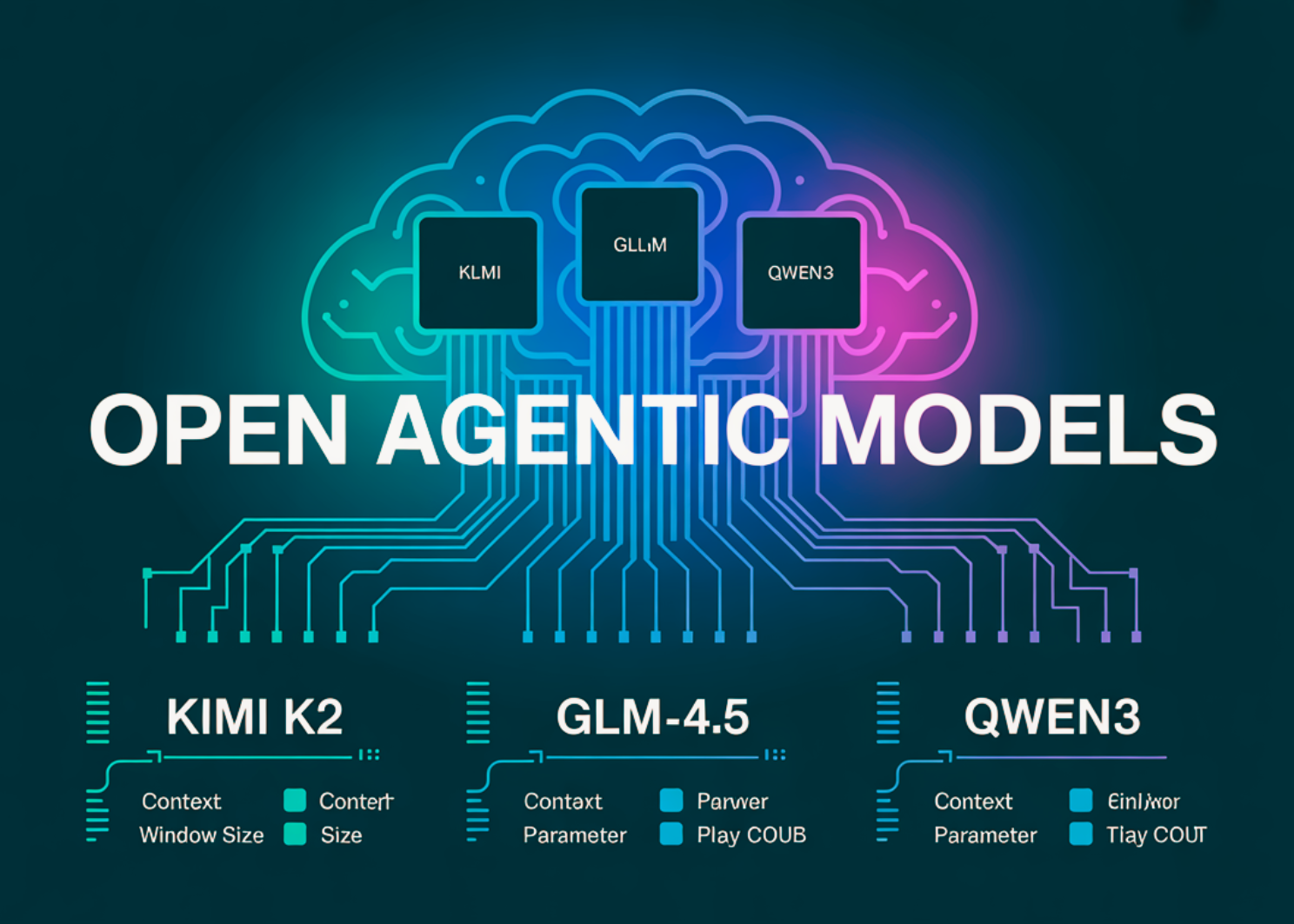The Best Chinese Open Agentic/Reasoning Models (2025): Expanded Review, Comparative Insights & Use Cases

China continues to set the pace in open-source large-language-model innovation, especially for agentic architectures and deep reasoning. Here is a comprehensive, up-to-date guide to the best Chinese open agentic/reasoning models, expanded with the newest and most influential entrants.
1. Kimi K2 (Moonshot AI)
- Profile: Mixture-of-Experts architecture, up to 128K context, superior agentic ability and bilingual (Chinese/English) fluency.
- Strengths:
- High benchmark performance in reasoning, coding, mathematics, and long-document workflows.
- Well-rounded agentic skills: tool-use, multi-step automation, protocol adherence.
- Use Cases: General-purpose agentic workflows, document intelligence, code generation, multi-language enterprise.
- Why Pick: The most balanced all-rounder for open source agentic systems.
2. GLM‑4.5 (Zhipu AI)
- Profile: 355B total parameters, native agentic design, long-context support.
- Strengths:
- Purpose-built for complex agent execution, workflow automation, and tool orchestration.
- MIT-licensed, established ecosystem (700,000+ developers), rapid community adoption.
- Use Cases: Multi-agent applications, cost-effective autonomous agents, research requiring agent-native logic.
- Why Pick: For building deeply agentic, tool-integrated, open LLM apps at scale.
3. Qwen3 / Qwen3-Coder (Alibaba DAMO)
- Profile: Next-gen Mixture-of-Experts, control over reasoning depth/modes, dominant multilingual model (119+ languages), repo-scale coding specialist.
- Strengths:
- Dynamic “thinking/non-thinking” switching, advanced function-calling, top scores in math/code/tool tasks.
- Qwen3-Coder: Handles 1M tokens for code, excels at step-by-step repo analysis and complex dev workflows.
- Use Cases: Multilingual tools, global SaaS, multi-modal logic/coding apps, Chinese-centric dev teams.
- Why Pick: Precise control, best multilingual support, world-class code agent.
4. DeepSeek-R1 / V3
- Profile: Reasoning-first, multi-stage RLHF training, 37B activated parameters per query (R1); V3 expands to 671B for world-class math/code.
- Strengths:
- State-of-the-art on logic and chain-of-thought reasoning, surpasses most Western rivals in scientific tasks.
- “Agentic Deep Research” protocols for fully autonomous planning/searching/synthesizing information.
- Use Cases: Technical/scientific research, factual analytics, environments that value interpretability.
- Why Pick: Maximum reasoning accuracy, agentic extensions for research and planning.
5. Wu Dao 3.0 (BAAI)
- Profile: Modular family (AquilaChat, EVA, AquilaCode), open-source, strong long-context and multimodal capabilities.
- Strengths:
- Handles both text and images, supports multilingual workflows, well suited for startups and low-compute users.
- Use Cases: Multimodal agentic deployment, SMEs, flexible application development.
- Why Pick: Most practical and modular for multimodal and smaller-scope agentic tasks.
6. ChatGLM (Zhipu AI)
- Profile: Edge-ready, bilingual, context windows up to 1M, quantized for low-memory hardware.
- Strengths:
- Best for on-device agentic applications, long-document reasoning, mobile deployments.
- Use Cases: Local/gov deployments, privacy-sensitive scenarios, resource-constrained environments.
- Why Pick: Flexible scaling from the cloud to edge/mobile, strong bilingual proficiency.
7. Manus & OpenManus (Monica AI / Community)
- Profile: China’s new benchmark for general AI agents: independent reasoning, real-world tool use, and agentic orchestration. OpenManus enables agentic workflows based on many underlying models (Llama variants, GLM, DeepSeek).
- Strengths:
- Natural autonomous behavior: web search, travel planning, research writing, voice commands.
- OpenManus is highly modular, integrating Chinese open models or proprietary LLMs for tailored agentic tasks.
- Use Cases: True mission-completion agents, multi-agent orchestration, open-source agentic frameworks.
- Why Pick: First major step towards AGI-like agentic applications in China.
8. Doubao 1.5 Pro
- Profile: Known for superior fact consistency and reasoning logic structure, high context window (expected 1M+ tokens).
- Strengths:
- Real-time problem-solving, superior logic structure, scalable to multiple enterprise deployments.
- Use Cases: Scenarios emphasizing logical rigor, enterprise-level automation.
- Why Pick: Enhanced reasoning and logic, strong in scalable business environments.
9. Baichuan, Stepfun, Minimax, 01.AI
- Profile: “Six Tigers” of Chinese open AI (per MIT Tech Review), each offering strong reasoning/agentic features in their domain (Stepfun/AIGC, Minimax/memory, Baichuan/multilingual legal).
- Strengths:
- Diverse applications: from conversational agents to domain-specific logic in law/finance/science.
- Why Pick: Choose for sector-specific requirements, especially high-value business apps.
Comparative Table
Key Takeaways & When to Use Which Model
- Kimi K2: Best all-rounder—if you want balanced agentic power and reasoning, long context, broad language support.
- GLM-4.5: Native agent, great for autonomous task apps or tool orchestration; open-source ecosystem leader.
- Qwen3/Qwen3-Coder: Superior for agile control, multilingual/enterprise tasks, and high-level code agentics.
- DeepSeek-R1/V3: Gold standard for chain-of-thought reasoning, math/science, and research-grade logic.
- Wu Dao 3.0: Most practical for SMEs/startups, especially for multimodal (text/image/code) agentic solutions.
- ChatGLM/Manus/OpenManus: Field deployment, privacy, and truly autonomous agents—recommended for cutting-edge real-world use, on-device, or collaborative multi-agent tasks.
- Doubao 1.5 Pro/Baichuan/Six Tigers: Consider for sector-specific deployments or if factual consistency and specialized logic are critical.
Michal Sutter is a data science professional with a Master of Science in Data Science from the University of Padova. With a solid foundation in statistical analysis, machine learning, and data engineering, Michal excels at transforming complex datasets into actionable insights.













